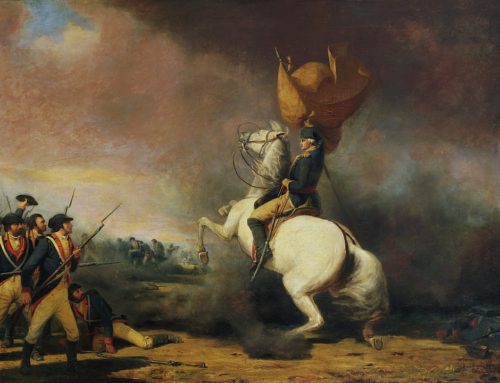“It is obvious today that America has defaulted on this promissory note insofar as her citizens of color are concerned.”
-Martin Luther King
August 28, 1963
Introduction:
The election of a Democrat to the Senate from Alabama represents a significant change from the historical rule by rural, evangelical, and white Protestants. The Republicans selected a repugnant, bull-headed reactionary that openly rejected the Republican establishment. His defeat explicitly recognizes that while the Deep South remains different from much of the country, modernism is coming to this part of the country. That is, a coalition of college-educated whites, suburbanites, African-Americans, and young people while not a majority in Alabama represent the winds of change.
Demographic changes have impacted all the states of the former Confederacy. That is, in the 1930’s and 1940’s, southern reactionaries won by 7 to 1 margins. Today, while they will be favored in most elections, they cannot take for granted electoral victories.
Understanding the South
In much of the country, Southern mores are both misunderstood and denigrated. Rather than opining about whether such perceptions are appropriate, I would rather emphasize that the South has a unique history that must be understood to appreciate the region. Specifically, unlike the rest of the country, the South remained primarily rural, evangelical, and conservative as a direct consequence of their calamitous efforts to leave the Union. The South suffered for generations from the deprivations caused by the Civil War. Furthermore, the South historically emphasized states rights rather than nationalism.
Reunification of the Confederacy Following the Civil War
Overview
For those of us who believed that the fraternal feelings between General Grant and General Grant at Appomattox led to an amicable reconciliation between the seceding 11 Confederate States and the Union we are mistaken. That is, the reunion between the Confederacy and the Union was a bitter one that led to harsh feelings for the next one hundred years. It is with sadness that we recall Lee’s surrender. It is always painful to see a dignified gentleman need to woo his pragmatic adversary in order to seek amelioration of conditions. However, as General Grant so eloquently stated: “Lee represented a terrible cause.”
Over the ensuring years, the strife, the maltreatment of the Freedman, and the economic despair of the South were far worse than Lee’s Appomattox experience.
Reconstruction: A period of U.S. history, from 1865 to 1877, during which the nation tried to resolve the status of the ex-Confederate states, the ex-Confederate leaders, and freedmen (ex-slaves) after the American Civil War.
In 1877, as part of a Congressional bargain to elect Republican Rutherford B. Hayes as president following the close 1876 presidential election, U.S. Army Troops were removed from the South, ending Reconstruction and allowing Democrats to violently suppress Republican voters in order to take power. In brief, the North until 1965 effectively turned their back on civil rights.
During Reconstruction Freedman benefitted from the three Civil Rights Amendments and other Civil Rights acts. After Reconstruction ended — in effect rejected by the South — the South remained a poverty-stricken “backwater” dependent on agriculture. White Southerners soon succeeded in re-establishing legal and political dominance over blacks through violence, intimidation and discrimination. Historian Eric Foner argues, “What remains certain is that Reconstruction failed, and that for blacks its failure was a disaster whose magnitude cannot be obscured by the genuine accomplishments that did endure.”
There existed significantly different philosophies toward reconciliation with the Confederate States.. Abraham Lincoln and Andrew Johnson favored a quick, straightforward reintegration into the Union for the Southern States.
Upon Lincoln’s assassination in April 1865, Andrew Johnson of Tennessee, who had been elected as Lincoln’s vice president in 1864, became president. Andrew Johnson was the most racist president in American history. As a former slaveholder, Johnson denigrated Blacks, feeling that they secretly wanted to usurp White Rule, and even kill Whites. Johnson opposed all civil liberties for Blacks.
Radical Republicans who controlled the Fate of the South from 1867-1876 favored a very strict policy for allowing Southern states to reenter the Union favored a very strict policy for allowing Southern states to reenter the Union. They wanted Blacks to have full civil rights—right to own property, enter into contracts, and vote. Southerners when they returned to power passed. Black Codes in every one of the former Confederate States that attempted to reduce Blacks to a similar status that they held under slavery. Black Codes prevented Blacks from owning land, entering into contracts, and prevented Blacks from voting.
Ultimately, both visions prevailed. That is from 1867-1876 Radical Republicans dominated Southern politics. The laws and constitutional amendments that laid the foundation for the most radical phase of Reconstruction were adopted from 1866 to 1871. By the 1870s, Reconstruction had officially provided freedmen with equal rights under the constitution, and blacks were voting and taking political office. Republican legislatures, coalitions of whites and blacks, established the first public school systems and numerous charitable institutions in the South.
After 1876, Southern “Redeemers” controlled Southern politics, and instituted harsh Jim Crow legislation that effectively made Blacks Second Class citizens.
From 1890 to 1908, Southern states passed new constitutions and laws that disfranchised most blacks and tens of thousands of poor whites with new voter registration and electoral rules. When establishing new requirements such as subjectively administered literacy tests, some states used “grandfather clauses” to enable illiterate whites to vote.
Economic Development in the North
The North had a more highly developed industrial economy that led to military success during the Civil War and sustained economic growth after the war.
Key Points
- In 1861, the Union population was 22 million while the South had a population of just 9 million (more than 3.5 million slaves and about 5.5 million whites).
- The extensive railroad network in the North allowed for movement of troops and supplies that were essential to the war effort.
- The South mistakenly believed that its cotton was so important to the world that other countries would come to its aid in the war with the North.
- The North strengthened its economy during the war and continued to grow after the war, while the Southern economy was destroyed and stymied for years after losing the war.
- Second Industrial Revolution: A phase of rapid industrialization in the final third of the nineteenth century and the beginning of the twentieth century in the United States. Also known as the “Technological Revolution.” Many of the technological advances and systems developed during this phase in the American economy were built upon infrastructural and legal changes brought about by the Union during the Civil War.
King Cotton: A slogan used by Southerners (1860–1861)
The more industrialized economy of the North aided in the production of arms, munitions, and supplies, as well as in creating financial stability and increasing ease of transportation. During the Civil War, the Northern economy grew, and the Confederate territory shrank and its economy weakened.
The Union controlled more than 80 percent of the shipyards, steamships, riverboats, and the navy.
Excellent railroad links between Union cities allowed for the quick and cheap movement of troops and supplies. Transportation was much slower and more difficult in the South, which was unable to augment its much smaller rail system, repair damage, or even perform routine maintenance. The failure of Jefferson Davis to maintain positive and productive relationships with state governors damaged his ability to draw on regional resources.
“King Cotton”
During the Civil War, the leaders of the Confederacy used the slogan “King Cotton” to convince Southerners that succession from the North was feasible and desirable. The idea was that control over cotton exports would make an independent Confederacy economically prosperous, ruin the textile industry of New England, and—most importantly—force Great Britain and perhaps France to support the Confederacy militarily because their industrial economies depended on Southern cotton. The slogan was widely believed in the South, but in the end, represented a misperception of the world economy and led to bad diplomacy, such as the refusal to ship cotton before the blockade started. King Cotton” did not help the Confederacy. The Confederacy’s gamble on cotton was not only disastrous for its war efforts, but also for its economic stability.
Union Wealth Increased During Civil
The Union grew rich fighting the war, as the Confederate economy was destroyed. The Republicans in control in Washington had a vision of an industrial nation, with great cities, efficient factories, productive farms, strong national banks, and high-speed rail links. The South had resisted policies such as tariffs to promote industry and homestead laws to promote farming because slavery would not benefit; with the South gone, and Northern Democrats very weak in Congress, the Republicans enacted their legislation. They wrote an elaborate program of economic modernization that had the dual purpose of winning the war and permanently transforming the economy.
.
The more industrialized economy of the North continued to prosper in the years following the war, with men such as Cornelius Vanderbilt building their fortunes on transportation systems needed to sustain Northern trade.
Machinery became a major industry, and many types of machines were developed. Businesses began to operate over wide areas, and chain stores and mail-order companies developed.
In addition, an explosion of new discoveries and inventions took place, a process called the “Second Industrial Revolution,” which started in 1870, just five years after the end of Civil War. The electric light, telephone, steam turbine, internal-combustion engine, automobile, phonograph, typewriter, and tabulating machine were some of the many inventions of the period. All of these inventions contributed to the rapid expansion of the economy, especially in the North.
Devastation in the South
Many of the South’s largest cities, and much of its human and material resources, were destroyed during the Civil War by the Union armies.
Key Points
- Much of the livestock and farming supplies of the South were destroyed.
- The South transformed from a prosperous minority of landholders to a tenant agriculture system.
- Many of the recently freed slaves only could find jobs in unskilled and service industries.
- One in four white Southern men of military age was killed during the war.
- After emancipation, the entire economy of the South had to be rebuilt on a different basis.
The end of the Civil War was accompanied by a large migration of new freed people to the cities. In the cities, African Americans were relegated to the lowest paying jobs such as unskilled and service labor. Men worked as rail workers, rolling and lumber mills workers, and hotel workers. The large population of slave artisans during the antebellum period had not been translated into a large number of freemen artisans during Reconstruction. Black women were largely confined to domestic work employed as cooks, maids, and child nurses. Others worked in hotels. A large number became laundresses. The dislocations had a severe negative impact on the black population, with a large amount of sickness and death.[23]
Over a quarter of Southern white men of military age—the backbone of the South’s white workforce—died during the war, leaving countless families destitute. Per capita income for white southerners declined from $125 in 1857 to a low of $80 in 1879. By the end of the 19th century and well into the 20th century, the South was locked into a system of poverty. How much of this failure was caused by the war and by previous reliance on agriculture remains the subject of debate among economists and historians.[24]
One historian, William Hesseltine, wrote in 1936 the following about the devastation:
Throughout the South, fences were down, weeds had overrun the fields, windows were broken, live stock had disappeared. The assessed valuation of property declined from 30 to 60 percent in the decade after 1860.
Farms were in disrepair, and the prewar stock of horses, mules, and cattle was much depleted, with two-fifths of the South’s livestock killed. The transportation infrastructure lay in ruins, with little railroad or riverboat service available to move crops and animals to market. Railroad mileage was located mostly in rural areas, and more than two-thirds of the South’s rails, bridges, rail yards, repair shops, and rolling stock were in areas reached by Union armies, who systematically destroyed what they could. Even in untouched areas, the lack of maintenance and repair, the absence of new equipment, the heavy overuse, and the deliberate relocation of equipment by the Confederates from remote areas to the war zone ensured the system would be ruined at war’s end. Restoring the infrastructure—especially the railroad system—became a high priority for Reconstruction state governments.
A Devastated Economy
The enormous cost of the Confederate war effort took a high toll on the South’s economic infrastructure. The direct costs to the Confederacy in human capital, government expenditures, and physical destruction from the war totaled $3.3 billion. By 1865, the Confederate dollar was worthless due to massive inflation, and people in the South had to resort to bartering services for goods, or else use scarce Union dollars. With the emancipation of Southern slaves, the entire economy of the South had to be rebuilt. Having used most of their capital to purchase slaves, white planters had minimal cash to pay freedmen workers to bring in crops. As a result, a system of sharecropping was developed in which landowners broke up large plantations and rented small lots to the freedmen and their families.
Sharecropping
Sharecropping was a way for very poor farmers, both white and black, to earn a living from land owned by someone else. The landowner provided land, housing, tools, and seed (and perhaps a mule), and a local merchant provided food and supplies on credit. At harvest time, the sharecropper received a share of the crop (from one-third to one-half, with the landowner taking the rest and used his share to pay off his debt to the merchant.
The South was thus transformed from a prosperous minority of landed gentry slaveholders into a tenant farming agriculture system.
More than a fourth of Southern white men of military age—meaning the backbone of the South’s white workforce—died during the war, leaving countless families destitute. Per capita income for white Southerners declined from $125 in 1857 to a low of $80 in 1879. By the end of the nineteenth century and well into the twentieth century, the South was locked into a system of poverty. How much of this failure was caused by the war and by previous reliance on agriculture remains the subject of debate among economists and historian
Later Years and Legacy
Johnson finished his term maintaining his opposition to Reconstruction and continuing his self-imposed role as protector of the white race. After leaving the White House, he took advantage of his excellent oratory skills and went on the speaking circuit. In 1874, he won election to the U.S. Senate for a second time. In his first speech after returning to the Senate, he spoke out in opposition to President Ulysses S. Grant’s military intervention in Louisiana. During the Congressional recess the following summer, Johnson died from a stroke near Elizabethton, Tennessee, on July 31, 1875. According to his wishes, he was buried just outside Greeneville, his body wrapped in an American flag and a copy of the Constitution placed under his head.
Some historians view Andrew Johnson as the worst person who could have been president at the end of the Civil War. His racist views prevented him from making a satisfying peace. His lack of political skills alienated him from Congress, and his arrogance lost him the public’s support. As president, he probably contributed to the national strife that followed the Civil War, and lost the opportunity to champion the rights of the disadvantaged



